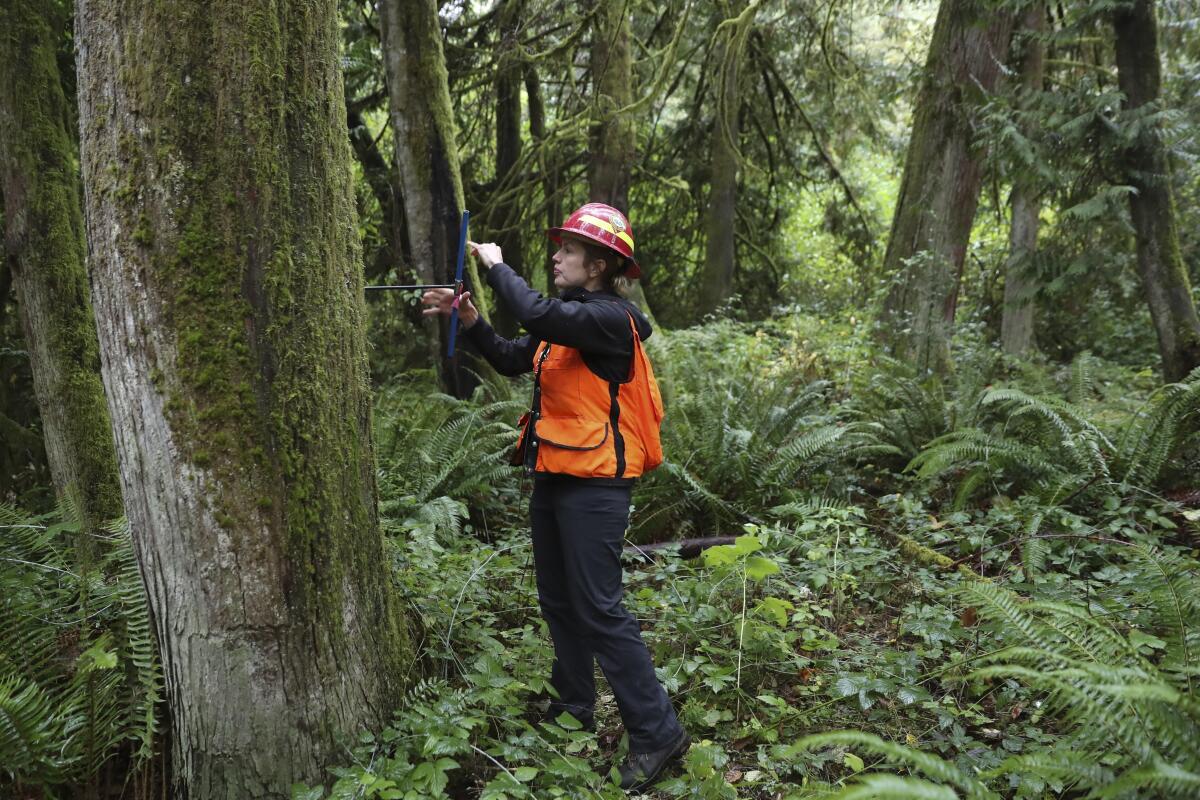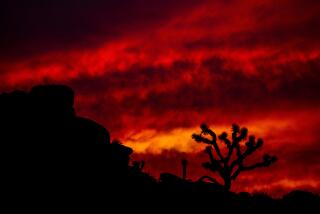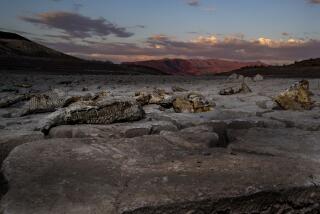Climate change is hastening the demise of Pacific Northwest forests

SHERWOOD, Ore. — Deep inside a forest in Oregon’s Willamette Valley stands a dead “Tree of Life.”
Its foliage, normally soft and green, is tough and brown or missing altogether. Nonetheless, the tree’s red bark, swooping branches and thick, conical base identify it as the Pacific Northwest’s western red cedar.
Christine Buhl, a forest health specialist for the Oregon Department of Forestry, plunges a tool called an increment borer into its trunk. She twists the handle of the corkscrew-like borer and extracts a long, thin sample of the tree’s inner growth rings.
The rings become thinner over time, indicating the tree’s growth slowed before it finally died — a sign that this red cedar, like thousands of others in Oregon and Washington, died from drought.
“That’s why it’s the canary,” says Buhl. “Any tree that’s less drought-tolerant is going to be the canary in the coal mine. They’re going to start bailing.”
For thousands of years, people have used red cedar to make diverse items such as canoes and clothing. Its many uses earned it names such as the “Tree of Life.”
But more recently, scientists have started calling this water-loving relative of redwoods by a less flattering name: “the climate canary.”
The Bay Area is in the global spotlight this week, hosting international diplomacy, campaign fundraising and political protests.
Last year, Buhl and colleagues reported that red cedars were dying throughout the tree’s range not from fungus or insect attacks, but due to the region’s “climate change-induced drought.”
And red cedars aren’t alone. In recent years, at least 15 native Pacific Northwest tree species have experienced growth declines and die-offs, 10 of which have been linked to drought and warming temperatures, according to recent studies and reports.
Many researchers, Buhl included, are arguing that these drought-driven die-offs are the beginning of a much larger and long-predicted shift in tree growing ranges due to climate change.
Trees, and plants generally, have growing ranges that are largely determined by climate factors such as moisture and temperature.
For decades, scientists have argued that as atmospheric warming continues, growing ranges in the Northern Hemisphere will shift upslope in elevation and farther north, leaving many trees stranded in a warmer, drier world.
They predict that as climate mismatch sets in, trees will die off and not grow back.
Daniel DePinte, Forest Service aerial survey program manager, suspects range changes are driving “Firmageddon” — a term he and other researchers use for the more than 1,875-square-mile die-off of five fir species in Oregon, Washington and Northern California.
“The forests are moving uphill,” DePinte said.
He and colleagues identified and named the massive, drought-driven fir “mortality event” last year while surveying area forests by plane.
According to predictions, climate-induced die-offs are expected to start at the edges of growing ranges, including at lower-elevation locations that are expected to become too warm and dry for many species.
DePinte’s survey revealed that the largest die-offs associated with Firmageddon are occurring at lower elevations.
Buhl and colleagues found a similar pattern with western red cedar. Mortality was greatest at sites below about 650 feet in elevation west of the Cascade Range, according to their analysis.
Scientists have also observed a similar pattern for Douglas fir, the region’s leading commercial timber species. Douglas fir is experiencing a 720-square-mile die-off, the majority in the Klamath Mountains near the southern Oregon cities of Ashland and Medford.
The die-off is limited to the lower elevations but is likely to move uphill as temperatures warm in the coming decades, according to a study in the Journal of Forestry.
“Our analysis concluded that if climate change continues as predicted, we could see increased Douglas fir mortality at higher elevations,” said study co-author David Shaw, a professor and forest health specialist at Oregon State University.
Shaw called the die-off “consistent with predictions for climate change.”
But whereas red cedar is believed to be dying from drought alone, the Firmageddon and Douglas fir die-offs have been linked to
a combination of drought weakening trees and insect pests moving in for the kill.
“These insects are not normally tree killers,” said DePinte. “This is evidence that the forests are reacting to climate change and droughts.”
Douglas fir is not considered a true fir and is not officially part of Firmageddon, according to DePinte.
The combination of drought-induced stress and pests, said Patrick Tobin, associate professor of disturbance ecology at the University of Washington, is analogous to a person with a weakened immune system dying from the flu.
“Drought-stress opens a window for biotic agents that might otherwise not be able to overcome a healthy, well-defended tree,” he said.
Tobin is a co-author of a 2021 study in the journal Forest Ecology and Management on the widespread decline of big leaf maples in western Washington. The study was unable to determine whether drought alone or drought in combination with disease-causing fungi was killing off the native maples.
As for the climate canary, Buhl believes red cedar is unlikely to disappear from the landscape entirely, but probably won’t grow back in areas where it’s dying off.
“Unless we turn back climate change, there is no reason to hope western red cedar is going to make a comeback,” said Buhl.
Gilles writes for Columbia Insight, a nonprofit news website covering environmental issues in the Pacific Northwest. This story was distributed via the Associated Press.
More to Read
Sign up for Essential California
The most important California stories and recommendations in your inbox every morning.
You may occasionally receive promotional content from the Los Angeles Times.











